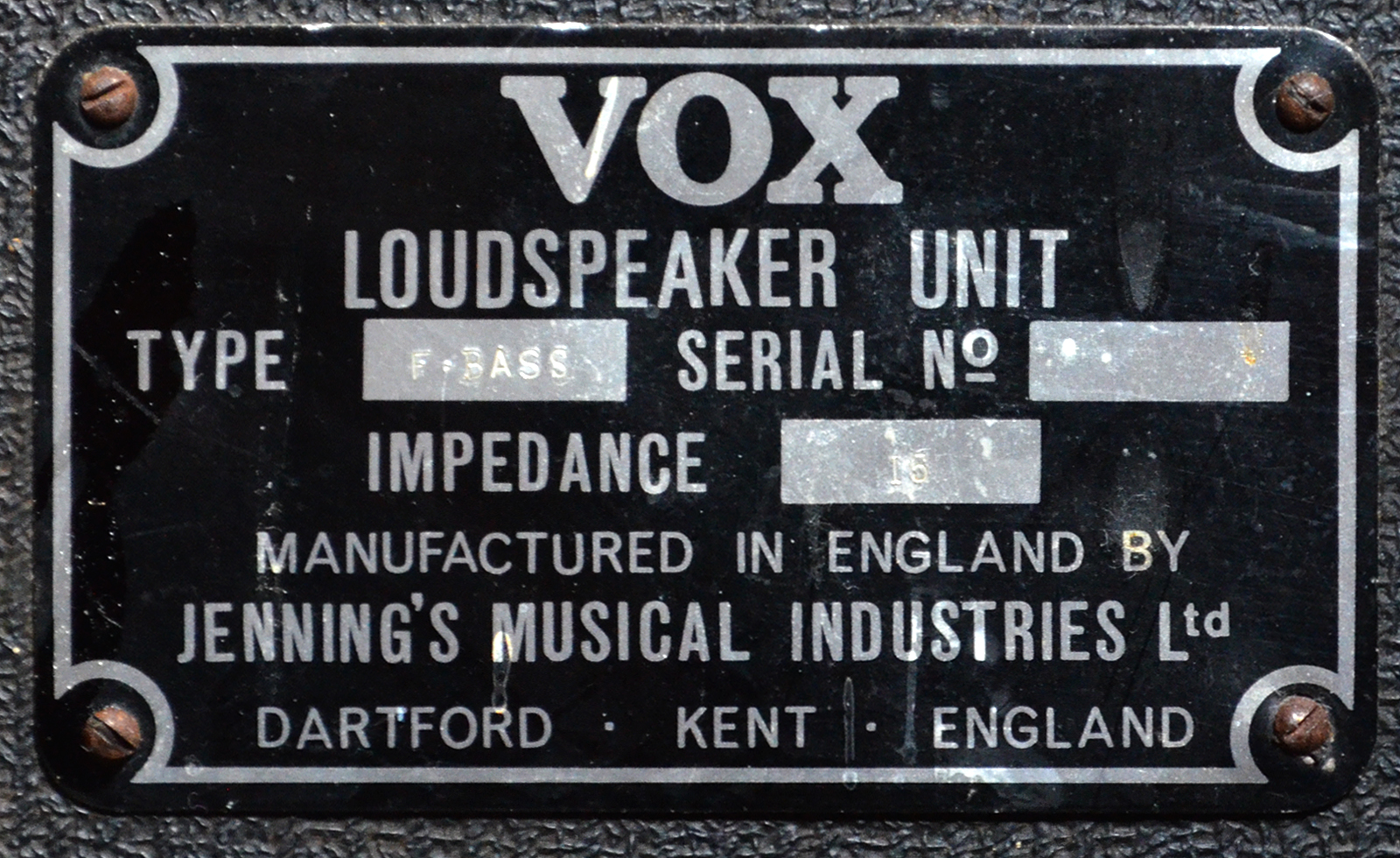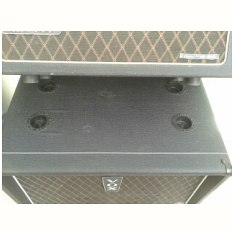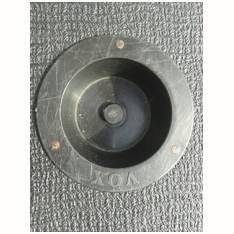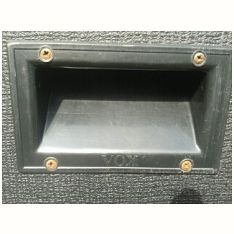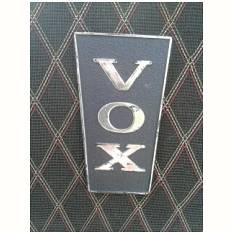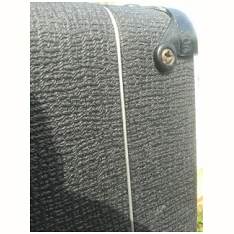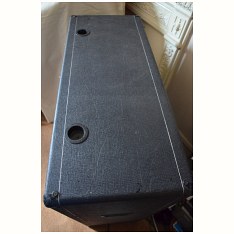VOX FOUNDATION BASS CABS (1967-1973)
A page from the Vox solid state catalogue of April 1967.
- For an overview of solid state Foundation Bass amps, see this page.
- The Foundation Bass speaker cabinets supplied with solid state amps are constructed slightly differently from the earlier cabs that accompanied AC50s and AC100s (1963-1967). They are wider (to accommodate the wider solid state amps) and have pressure ports at bottom.
- From the second third of 1967 this new type of Foundation Bass cab was the only one supplied. One regularly finds them with late AC50s and AC100s.
- Size: 24" wide; 17" deep; 27" high. Earlier cabs (for the valve amps) measure: 22 x 16 x 26".
- Speakers remain 18" units, normally Celestion at first (1967) then later Goodmans (1968-1973). Impedance is always 15/16 ohms.
- Serial number plates cover a second hole for a second jack socket. If two 16 ohm cabs were daisy-chained via this second socket, however, the total impedance would be 8ohms, not ideal for the solid state amps, which really needed 16 ohms.
- Backs are secured by 18 screws. Earlier Foundation Bass cabs have 12 or 14 screws at back. For an overview of early cabs, see this page on the Vox AC50 website.
- The new solid state cabs have no carrying handles (recesses) let into the sides. Sets of wheels, fixed at back on the underside, were provided at first, however, to aid movement; and a frame was fitted at top for the amp to sit on.
- In 1972, close to the end of production, new features were introduced - wells for the feet of the amp to sit in, and plastic side handles - see the cab at the foot of this page. The provision of these marked the end of the chrome stand and wheels.
The paper slip noting the wiring scheme and speaker impedance (15ohms) affixed to the inside of Foundation Bass cabs (and Dynamic and Super Foundation Bass units too).
A standard JMI speaker cabinet ID plate - "F.BASS", but no serial number stamped in the "SERIAL No." panel.
1967 to spring 1968 (JMI): around 550 Foundation Basses sold. Speaker cabinets were not available separately.
late 1968 to late 1969 (VSEL): in total around 360 (?). From number 001 to at least 239 (highest known VSEL) and 447 (lowest known VSL). At least one VSEL Foundation Bass cab does not have a stamped number.
early 1970 to late 1970 (VSL): around 500. From number 447 (or before) through to 864 (and possibly beyond). VSL sold a number of Defiants and speaker cabinets made by VSEL.
Jennings Musical Industries (JMI), 1967 to spring 1968
Above, an early Foundation Bass set, complete with original chrome frame and fixed wheels. The speaker inside the cab is an 18 inch Celestion T1279. For further pictures, see this page. Numbered stickers were stuck to cab and back board so the two could be matched up. The position of screw holes and so on varied from cab to cab and back board to back board.
Above, a VSEL set complete with covers
In company with amps, the VOX logo at first was in silver. Later the legend "Solid State" was incorporated (as in the cab below); and later still in the JMI period the lettering came to be done in gold.
An example without grille cloth to show the port at the front, which is lacking in the Foundation Bass cabs supplied in the earlier 1960s. Badge and flag have been stuck on the baffle top left.
VOX SOUND EQUIPMENT LIMITED, autumn 1968 to 1970
The lower of the two cabs in the first pic. is the VSEL. Gold string. Driver is a Goodmans 15ohm unit - the connecting wires are held to the cab by insulated staples. The back, which is numbered in chalk with same number as the accompanying cab, is made of high-density chip-board (particle board). The rest of the cab is Baltic ply, including the baffle.
The speaker was evidently stock taken over from JMI by "Vox Sound Equipment Limited" in mid 1968. Speakers with these labels are also found in VSEL Super Foundation Bass cabs.
VOX SOUND LIMITED, early 1970 to 1973.
Serial number 289, currently in the UK. A bit tatty and stencilled on the back, but functionally extremely sound. The Celestion driver is G18C rated at 100W. Gold string still. The back fixings are wood screws rather than machine screws.
In 1972, some new features were introduced - plastic handles on the sides of the cab, and small wells in the top for the feet of the amp to sit in:
Of particular interest is the top of the cab with its inset wells for the feet of the amp. The idea for these is likely to have come from the stackable multi-link cabs - one pictured below - with wells for the feet of the cab on top of it. At this point, towards the end of production, the chrome support for the amp was evidently being phased out. Thanks to Mark for the pics.


